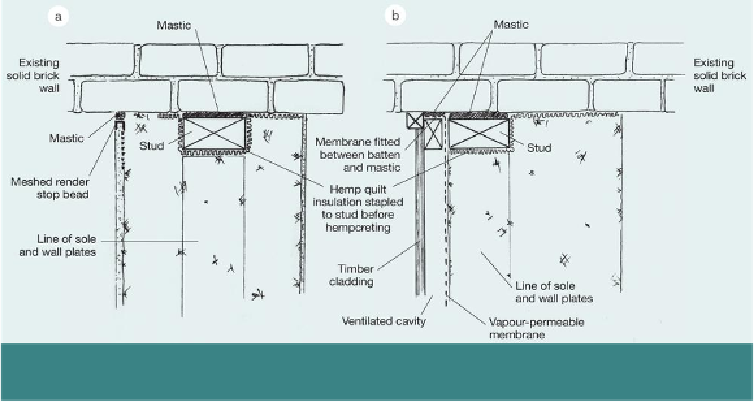Civil Engineering Reference
In-Depth Information
Figure 18.
Plan view: methods of achieving airtightness at junctions between a hempcrete wall and
a masonry wall, for (a) a rendered wall; (b) a clad wall.
Rather than trying to achieve a single solution to the problem, a more fail-safe approach
would be to consider the airtightness of each element joining the brick wall individually.
These elements will usually be a timber-frame stud, the hempcrete and the external finish
(lime render or cladding), as shown in Figure 18.
The timber stud could be sealed to the wall using expandable tape stuck to the back of the
stud before it is fixed to the wall. This will slowly expand once the stud is fixed, filling the
gaps that inevitably occur when fixing a flat material to a brick wall. However, these tapes
are made of synthetic materials and little information exists about their longevity, so they
may not constitute a robust solution to airtightness in the long term. The same effect can
be achieved by the addition of a natural mastic sealant prior to fixing the stud. Environ-
mentally sustainable mastics include burnt sand or linseed oil mastic sealant, which can be
used to good effect here.

Search WWH ::

Custom Search